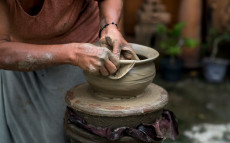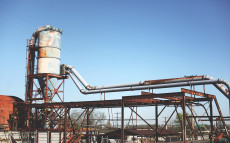- pathfindersAI
- Job Profile
Floral Designers
Summary
Floral Designers: Creators of Undying Beauty
What They Do
Floral Designers, also known as florists, are the artistic artisans who craft visually enchanting arrangements of flowers, foliage, herbs, and other botanical elements. These professionals bring to life the language of flowers, creating exquisite compositions for a wide range of occasions such as weddings, funerals, corporate events, and everyday enjoyment. By employing their acute sense of aesthetics and comprehensive understanding of plant varieties, floral designers transform raw materials into evocative displays that convey emotions, celebrate milestones, and enhance environments.
Job Responsibilities
The life of a Floral Designer involves a symphony of diverse tasks, interwoven with creativity and meticulousness. Primarily, they select flowers, greenery, and complementary accessories while considering color theory, symmetry, and design principles. Their daily activities include cutting and arranging flowers into bouquets or displays, ensuring freshness and longevity, and maintaining a clean and organized workspace. Floral Designers must communicate effectively with clients to understand their vision, preferences, and budget constraints. Moreover, they manage inventory, place orders with suppliers, price products, and sometimes handle sales transactions. In high-demand periods, like holidays and wedding seasons, they might create multiple arrangements under strict deadlines, demanding both speed and precision.
Essential Skills
Floral Designers thrive on a foundation of essential skills that blend creative flair with practical know-how. Creativity and an eye for detail are paramount, as the beauty of their work hinges on visual harmony and innovation. Proficiency in floral arrangement techniques, such as wiring, taping, and gluing, is critical. An understanding of horticulture ensures the selection of appropriate plants for different environments and longevity. Strong interpersonal skills enable designers to interact with clients and colleagues effectively, translating ideas into tangible forms. Finally, business acumen is important for those who run their own shops, encompassing inventory management, pricing strategies, and customer service.
Educational Pathways
The journey to becoming a Floral Designer does not follow a singular educational route but offers various pathways that aspiring designers might pursue. While a high school diploma is often the minimum requirement, many opt for specialized training through community colleges, technical schools, or dedicated floral design institutes. These programs offer certificates or associate degrees in floriculture, horticulture, or floral design, covering essential topics such as plant identification, color theory, and business practices. Furthermore, hands-on experience through internships or apprenticeships with established florists can provide valuable practical knowledge. Professional certifications from organizations like the American Institute of Floral Designers (AIFD) can enhance credibility and career prospects.
Career Prospects
The world of floral design holds promising career prospects for those with passion and perseverance. Floral Designers can find employment in floral shops, nurseries, and garden centers, as well as in event planning companies and luxury hotels. Some may choose the entrepreneurial route, opening their own floral boutiques. With experience, designers might advance to supervisory or managerial roles, oversee large-scale projects for high-profile events, or even become floral instructors. As public appreciation for personalized, handcrafted arrangements continues to grow, demand for skilled Floral Designers remains steady, although competition can be robust.
Conclusion
Floral Design is a vocation that blossoms at the intersection of creativity, craftsmanship, and communication. Those who embark on this career path will find themselves not only designing beautiful arrangements but also crafting moments of joy and remembrance. It requires a blend of artistic skill, practical know-how, and keen business sense. With multiple educational avenues and a broad spectrum of career opportunities, floral design offers a fruitful and enriching professional journey. For those enamored by the delicate allure of florals and the joy they bring, a career as a Floral Designer promises to be as rewarding as it is beautiful.
Video
Compensation
| State | Median Salary | Median Hourly | Positions |
|---|---|---|---|
| AL | 29,210 | 14.04 | 660 |
| AK | 44,720 | 21.50 | 70 |
| AZ | 34,610 | 16.64 | 370 |
| AR | 28,810 | 13.85 | 310 |
| CA | 40,660 | 19.55 | 4,790 |
| CO | 36,920 | 17.75 | 790 |
| CT | 38,010 | 18.28 | 480 |
| DE | 28,630 | 13.77 | 110 |
| DC | 39,580 | 19.03 | 110 |
| FL | 31,960 | 15.37 | 2,770 |
| GA | 30,840 | 14.83 | 900 |
| HI | 36,740 | 17.67 | 300 |
| ID | 29,670 | 14.27 | 410 |
| IL | 34,460 | 16.57 | 2,000 |
| IN | 30,540 | 14.68 | 840 |
| IA | 27,500 | 13.22 | 450 |
| KS | 29,190 | 14.03 | 520 |
| KY | 28,760 | 13.83 | 630 |
| LA | 29,330 | 14.10 | 690 |
| ME | 36,490 | 17.54 | 200 |
| MD | 37,130 | 17.85 | 660 |
| MA | 38,360 | 18.44 | 1,080 |
| MI | 31,980 | 15.38 | 1,860 |
| MN | 34,900 | 16.78 | 690 |
| MS | 27,910 | 13.42 | 370 |
| MO | 29,740 | 14.30 | 1,520 |
| MT | 29,740 | 14.30 | 220 |
| NE | 31,000 | 14.90 | 450 |
| NV | 37,310 | 17.94 | 380 |
| NH | 35,230 | 16.94 | 200 |
| NJ | 36,410 | 17.50 | 720 |
| NM | 27,120 | 13.04 | 240 |
| NY | 38,480 | 18.50 | 2,320 |
| NC | 33,960 | 16.33 | 1,190 |
| ND | 31,240 | 15.02 | 160 |
| OH | 28,780 | 13.84 | 1,590 |
| OK | 23,340 | 11.22 | 530 |
| OR | 35,580 | 17.11 | 600 |
| PA | 30,350 | 14.59 | 2,050 |
| RI | 35,820 | 17.22 | 170 |
| SC | 31,800 | 15.29 | 530 |
| SD | 30,330 | 14.58 | 150 |
| TN | 29,690 | 14.28 | 980 |
| TX | 31,070 | 14.94 | 3,230 |
| UT | 30,090 | 14.47 | 880 |
| VT | 36,570 | 17.58 | 140 |
| VA | 33,940 | 16.32 | 830 |
| WA | 37,750 | 18.15 | 1,070 |
| WV | 25,620 | 12.32 | 210 |
| WI | 31,770 | 15.28 | 810 |
| WY | 30,650 | 14.73 | 100 |
Similar Occupations
In this area you will find other occupations that are close to the one you were viewing in tasks, knowledge and work environment. If the primary job profile you are viewing isn't quite to your liking, take a look around and see what else is available.
Basic and Premium Accounts have more alternative occupations available than the Free account.

Craft Artists - 27-1012.00
Craft artists create handmade objects, utilizing various materials such as ceramics, glass, textiles, and wood to produce unique artworks or functional items. They often sell their creations through galleries, online platforms, or craft fairs while sometimes giving workshops to share their skills.
-
$36,600/yr
Median Pay -
5,830
Number of Jobs

Fabric and Apparel Patternmakers - 51-6092.00
Fabric and Apparel Patternmakers create templates for the construction of clothing and other textile products, ensuring precise measurements, shapes, and styles align with design specifications. They transform designers' concepts into detailed pattern pieces that guide the cutting and assembly process in garment manufacturing.
-
$62,510/yr
Median Pay -
2,670
Number of Jobs